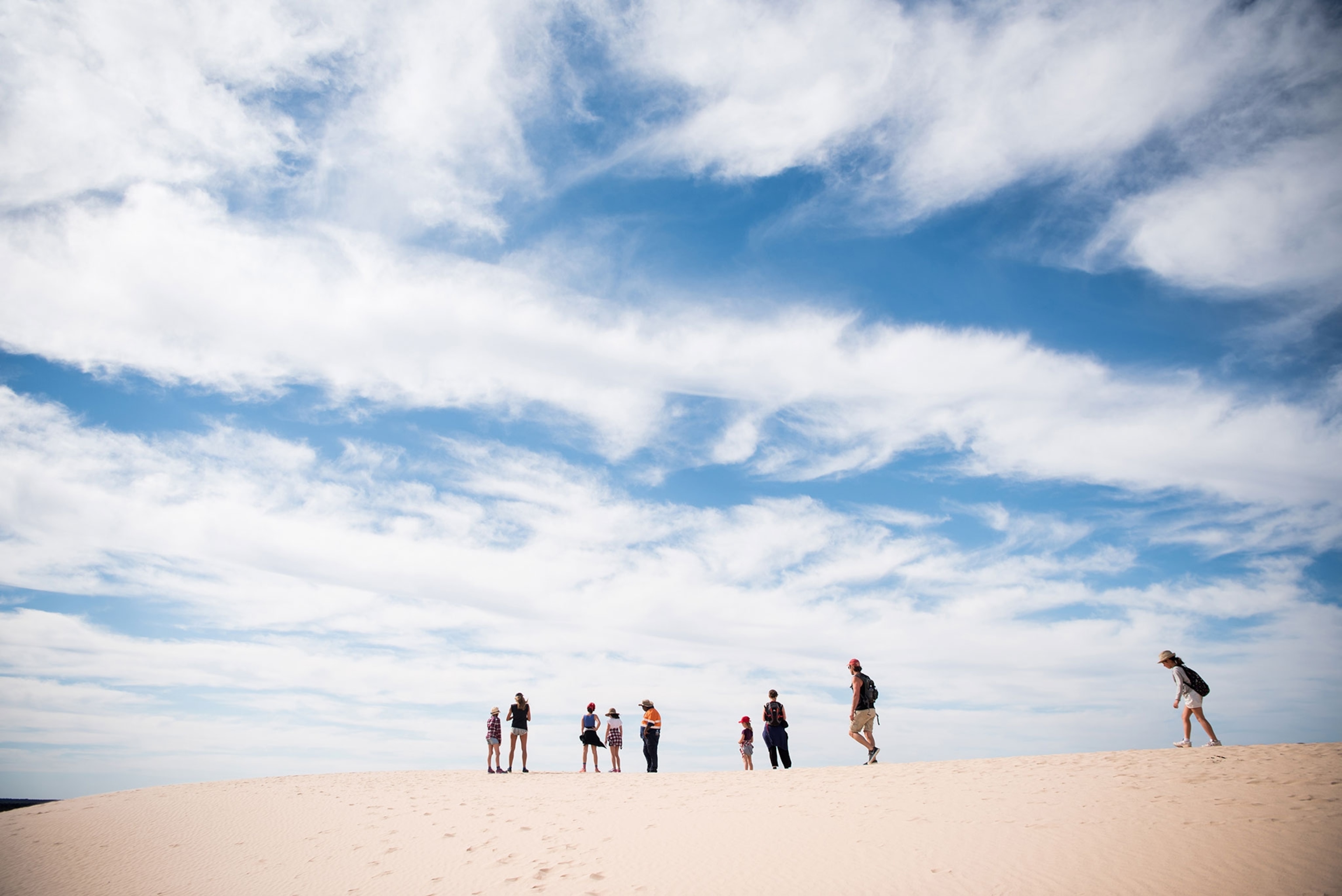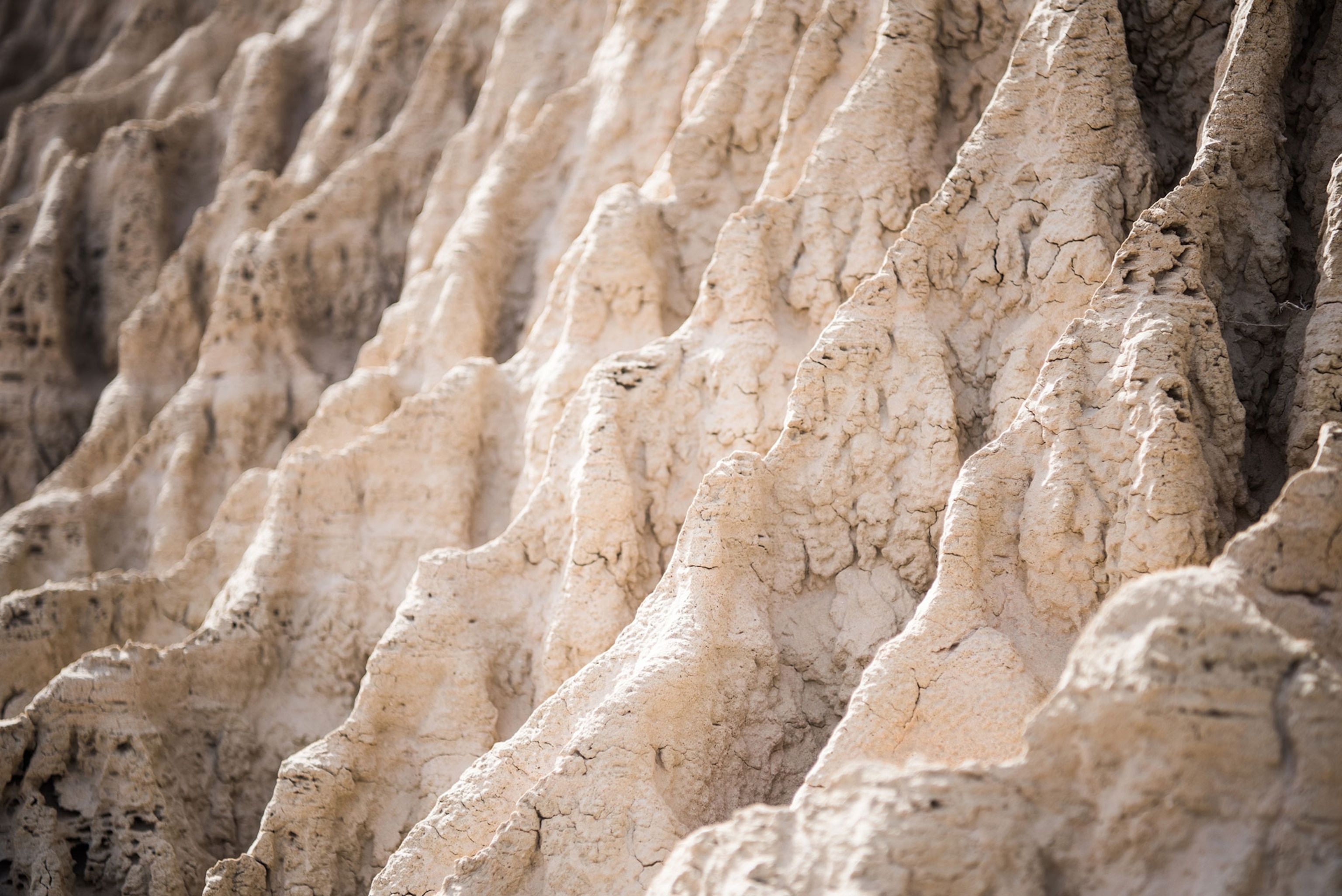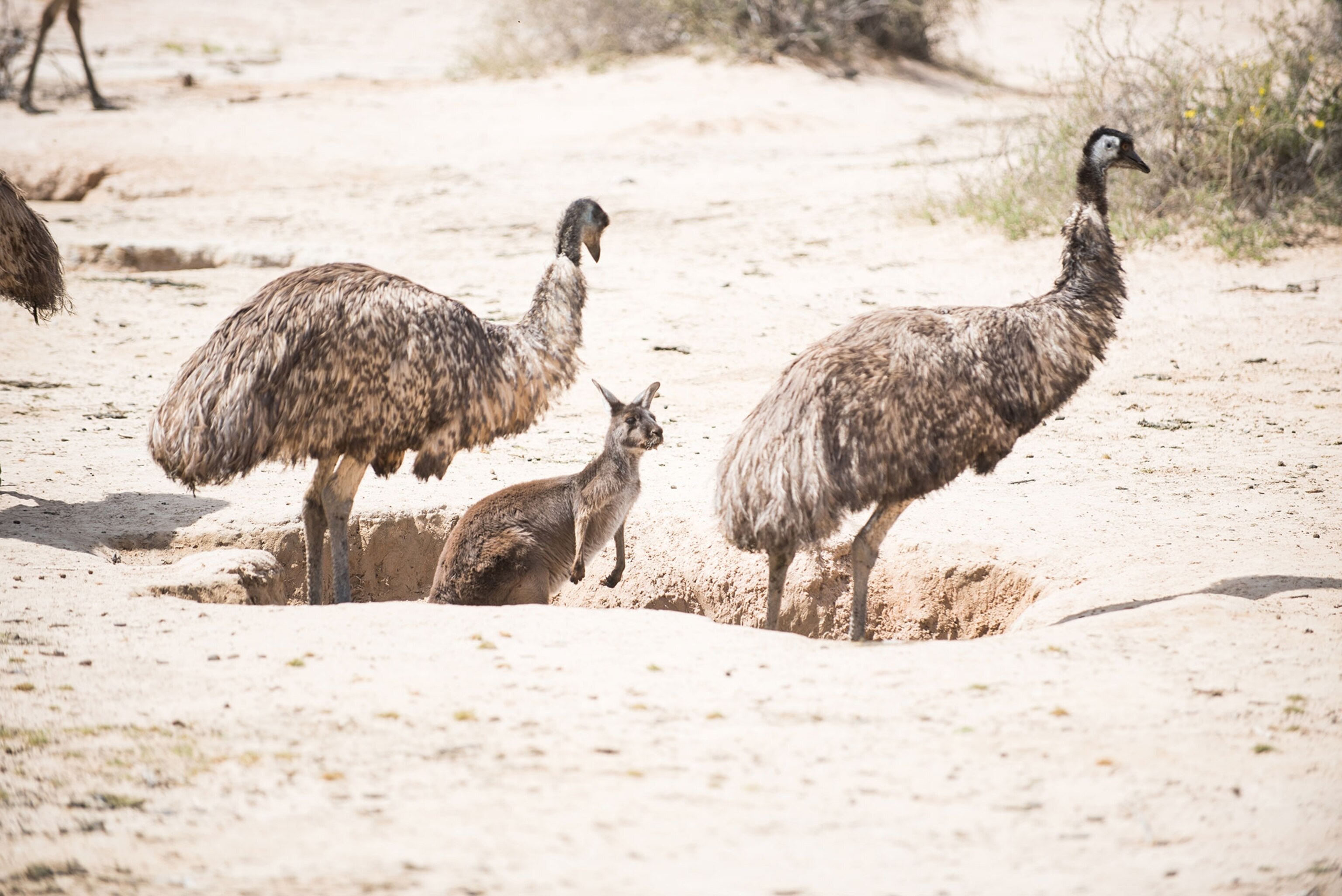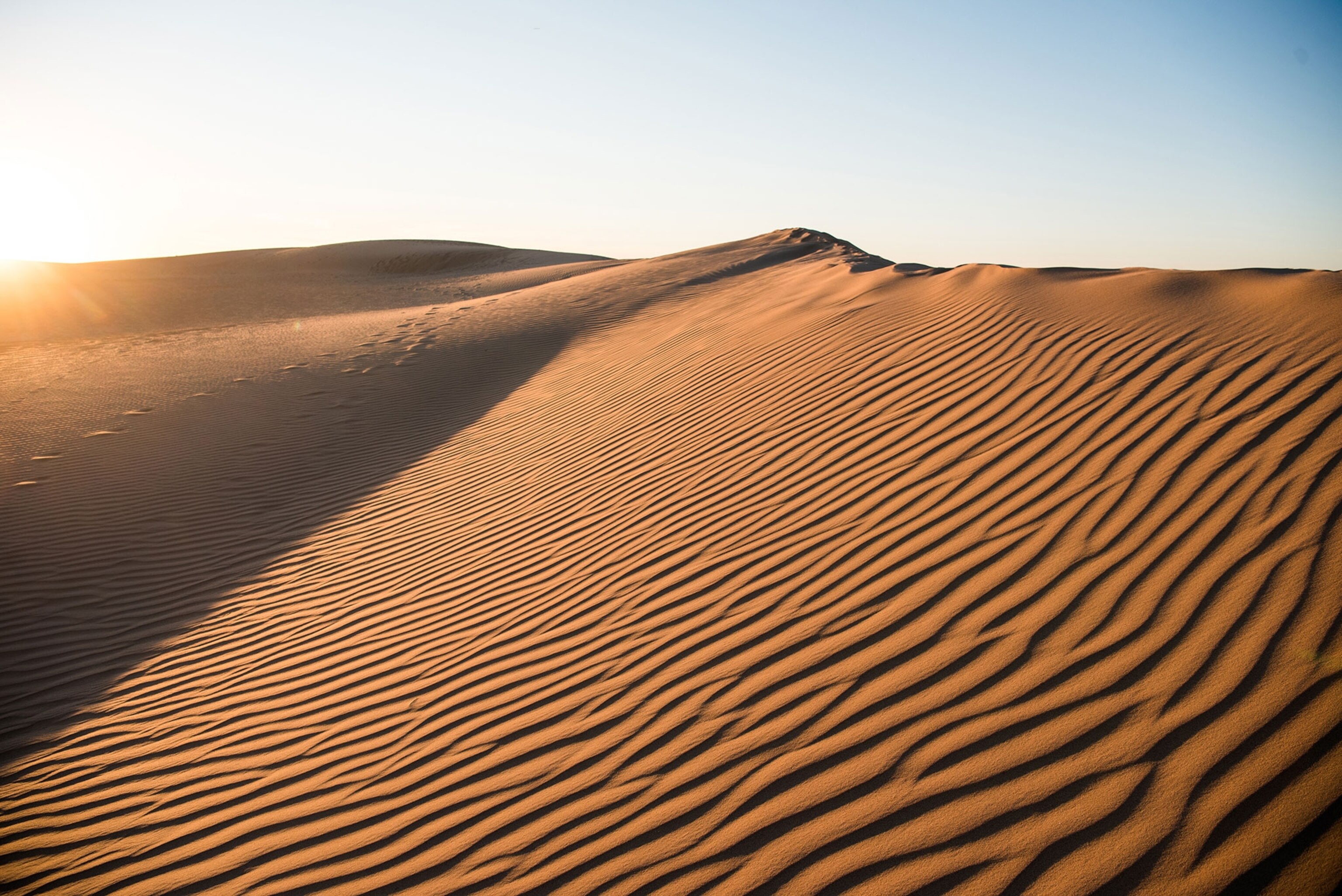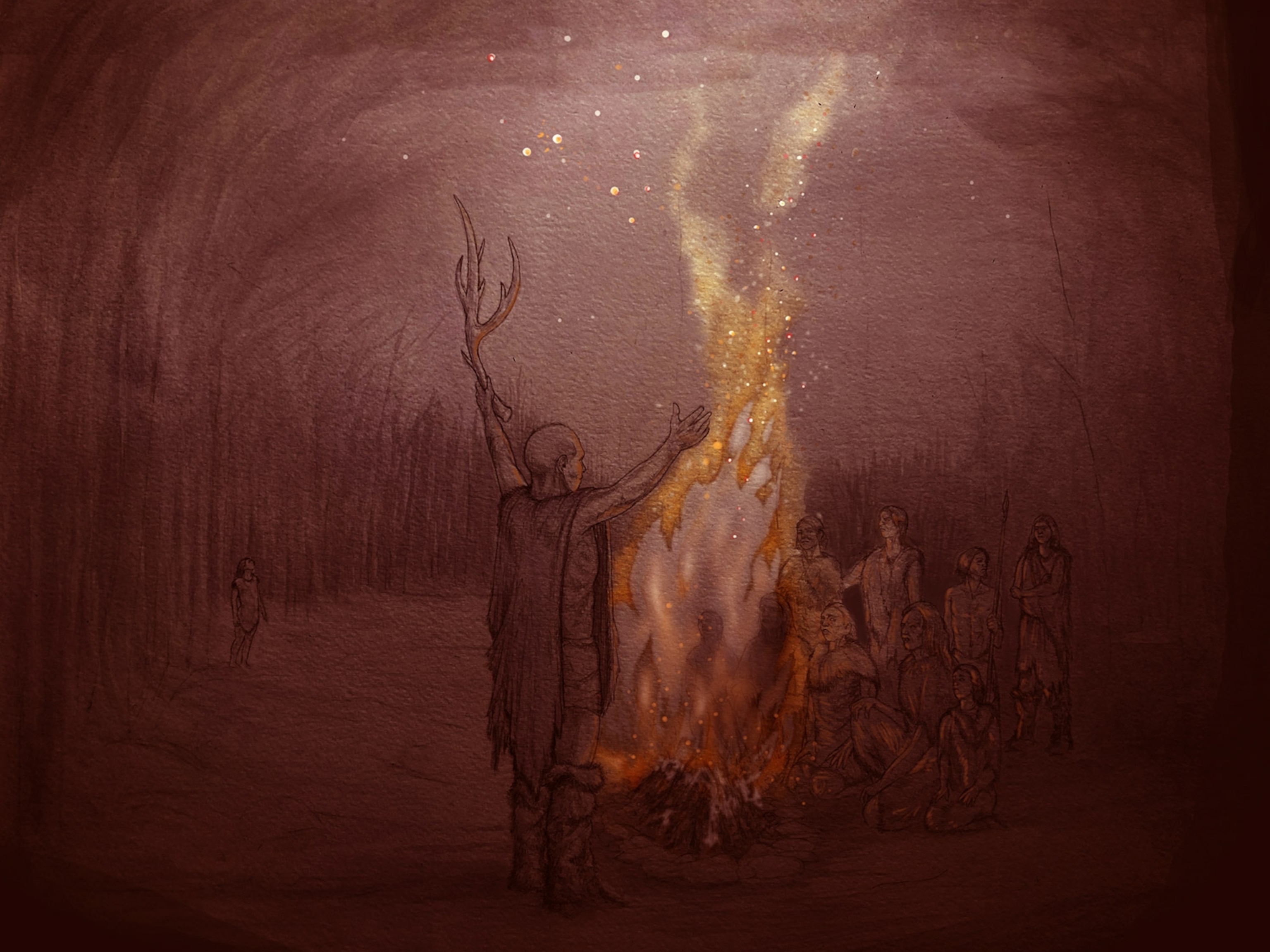Australia's Ancient Lakes Reveal Early Human History
The Willandra Lakes Region dried up about 18,500 years ago, but they left behind precious relics of the Pleistocene era.
Site: Willandra Lakes Region
Location: New South Wales, Australia
Year Designated: 1981
Categories: Cultural, natural
Criteria: (iii), (viii)
Reason: This network of ancient lake beds provides some of the most compelling evidence of the history of human development in Australia.
In 1968, Jim Bowler, a young geologist probing the layers of sand and clay in a long-dry lake bed in southwest New South Wales, came across the partially cremated remains of a woman who lived more than 40,000 years ago—in what is believed to be the world’s oldest ritual cremation site. Six years later, in the same area, Bowler discovered the almost complete skeleton of a man from the same period.
The pair, known as Mungo Lady and Mungo Man, provided new evidence of the long history of the Aboriginal people living in Australia and helped propel the growing indigenous rights movement.
The lakes of the Willandra Lakes Region dried up about 18,500 years ago when the creek that once fed them ceased to flow. But they left precious relics of the Pleistocene era, during which humans evolved into their present form. Along with skeletal remains, archaeologists have found stone tools, hearths, and grindstones believed to have been used to produce flour from grass seeds. The site still bears visible traces of the men, women, and children who once walked the lakeshores in the form of nearly 460 fossilized human footprints, the largest such collection in the world.
The lake beds have also offered up evidence of ancient animal and plant life, including fossils of giant marsupials that once roamed the continent.
Although the water is long gone, life continues in the five large dry lake basins and 14 smaller basins comprising the site. Small eucalypt shrubs live on the dunes, along with herbs and grass. The animal life includes bats, amphibians, reptiles, parrots, cockatoos, and finches.
The semiarid landscape still provides some striking vistas today, including the Walls of China, dramatic and fragile formations of clay and sand carved by the wind and rain into fanciful and ever changing patterns that resemble a lunar landscape.
Willandra Lakes Region’s designation in 1981 as a UNESCO World Heritage site ensured that its rich trove of history and fragile natural environment would be preserved for future generations.
- National Geographic Expeditions
How to Get There
The best way to get to the region is by car. You can fly or take a train to the town of Mildura and rent a car or book a tour there.
When to Visit
The semiarid climate of the area makes for cold winter nights and hot summer days. For daytime exploring, it’s best to go outside of the summer months. Rain is rare, but erratic, and major storms can cause road closures. Spring is the rainiest season. To avoid the rain and weather extremes, consider visiting in autumn.
How to Visit
You can tour the dry lakes by walking, driving, or cycling the six-mile Zanci Pastoral Loop in Mungo National Park. Walk the boardwalks along the Walls of China or take one of the Mungo Aboriginal Discovery Tours led by park rangers to see the area beyond the boardwalks. The towns of Mildura, Balranald, Pooncarie, and Ivanhoe—a few hours away—offer accommodations. There are also campsites available within Mungo National Park.

